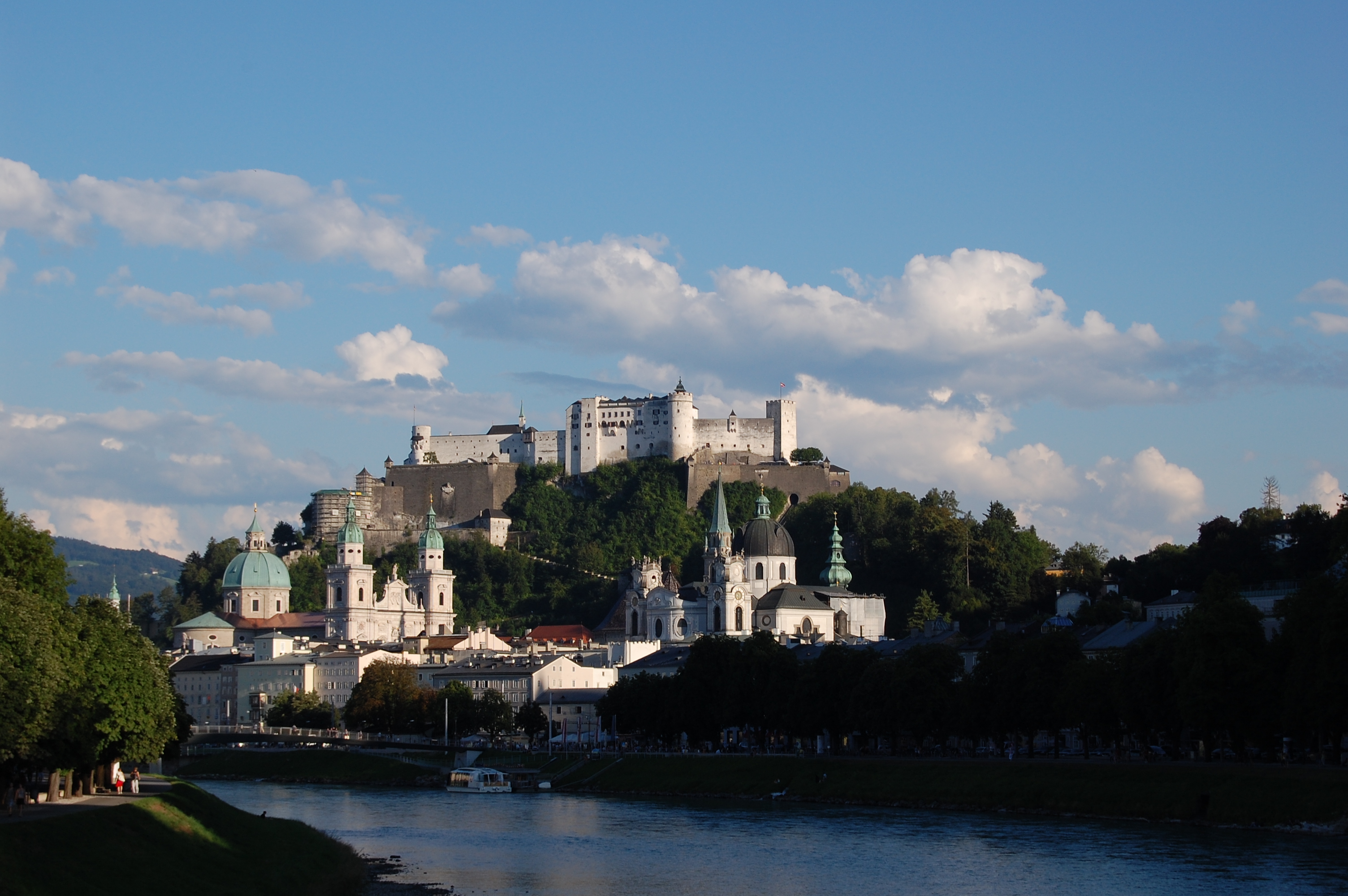Festungsberg Salzburg, Sommer 2008 on:
[Wikipedia]
[Google]
[Amazon]
 Festungsberg is a mountain in the city of Salzburg in
Festungsberg is a mountain in the city of Salzburg in
 Festungsberg is a mountain in the city of Salzburg in
Festungsberg is a mountain in the city of Salzburg in Austria
Austria, , bar, Östareich officially the Republic of Austria, is a country in the southern part of Central Europe, lying in the Eastern Alps. It is a federation of nine states, one of which is the capital, Vienna, the most populous ...
, , which rises to an elevation of . It is the site of the Hohensalzburg Fortress
Hohensalzburg Fortress (german: Festung Hohensalzburg, lit=High Salzburg Fortress) is a large medieval fortress in the city of Salzburg, Austria. It sits atop the Festungsberg at an altitude of 506 m. It was erected at the behest of the Prince-Arc ...
, which towers over Salzburg's historic city centre to the north, and forms part of the city's UNESCO World Heritage Site.
The Festungsberg forms the northern rim of the Berchtesgaden
Berchtesgaden () is a municipality in the district Berchtesgadener Land, Bavaria, in southeastern Germany, near the border with Austria, south of Salzburg and southeast of Munich. It lies in the Berchtesgaden Alps, south of Berchtesgaden; the ...
range within the Northern Limestone Alps
The Northern Limestone Alps (german: Nördliche Kalkalpen), also called the Northern Calcareous Alps, are the ranges of the Eastern Alps north of the Central Eastern Alps located in Austria and the adjacent Bavarian lands of southeastern Germany. ...
.
Archaeological findings date back to the Celtic La Tène culture
The La Tène culture (; ) was a European Iron Age culture. It developed and flourished during the late Iron Age (from about 450 BC to the Roman conquest in the 1st century BC), succeeding the early Iron Age Hallstatt culture without any defini ...
. The area was fortified during the days of the Roman
Roman or Romans most often refers to:
*Rome, the capital city of Italy
*Ancient Rome, Roman civilization from 8th century BC to 5th century AD
*Roman people, the people of ancient Rome
*''Epistle to the Romans'', shortened to ''Romans'', a letter ...
above the city of ''Iuvavum'' until King Odoacer
Odoacer ( ; – 15 March 493 AD), also spelled Odovacer or Odovacar, was a soldier and statesman of barbarian background, who deposed the child emperor Romulus Augustulus and became Rex/Dux (476–493). Odoacer's overthrow of Romulus Augustul ...
of Italy commanded to leave the Province of ''Noricum
Noricum () is the Latin name for the Celts, Celtic kingdom or federation of tribes that included most of modern Austria and part of Slovenia. In the first century AD, it became a Roman province, province of the Roman Empire. Its borders were th ...
'' in 488. About 715 Bishop Rupert of Salzburg
Rupert of Salzburg (german: Ruprecht, la, Robertus, Rupertus; 660 – 710 AD) was Bishop of Worms as well as the first Bishop of Salzburg and abbot of St. Peter's in Salzburg. He was a contemporary of the Frankish king Childebert III. Rupert ...
established the Benedictine Nonnberg Abbey
Nonnberg Abbey (german: Stift Nonnberg) is a Benedictine monastery in Salzburg, Austria. Founded by Saint Rupert of Salzburg, it is the oldest continuously existing nunnery in the German-speaking world. The monastery complex is today a protected ...
at the eastern foot of the mountain. Archbishop Gebhard had a first castle built at the top during the Investiture Controversy
The Investiture Controversy, also called Investiture Contest (German: ''Investiturstreit''; ), was a conflict between the Church and the state in medieval Europe over the ability to choose and install bishops (investiture) and abbots of monast ...
about 1077. Formerly used for grassland or for vineyard cultivation by the monks of St Peter's Abbey, the slopes are nowadays mostly wooded.
See also
*Mönchsberg
The Mönchsberg, at above sea level, is one of five mountains in the Salzburg, city of Salzburg in Austria. It flanks the western side of Altstadt Salzburg, Salzburg's historic city centre, and forms part of the Historic Centre of the City of Sal ...
Reference
Mountains of Salzburg La Tène culture {{Austria-geo-stub